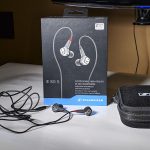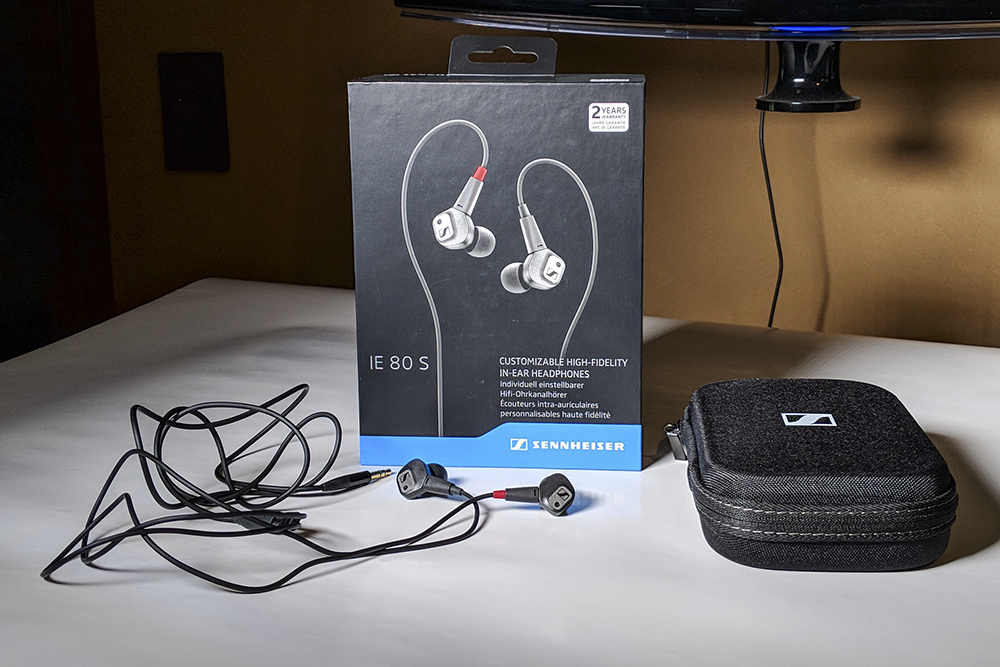With so many brands trying to claim the top spot in the mobile device war, for you the consumer, it’s not a simple task of narrowing it down to one model. Hopefully, we can be of assistance here. Verizon has once again been kind and loaned us the Google Pixel 2 XL smartphone for a month of testing. How does it fare against its predecessor and competition? Let’s find out in this Google Pixel 2 XL review.
• Aluminum unibody
• 3D Corning® Gorilla® Glass 5 screen
• QHD+ pOLED display
• Qualcomm® Snapdragon™ 835 CPU
• Android 8.0 OS (Oreo)
• Front facing speakers
• IP67 water resistant
• Not waterproof
• No 3.5mm jack
• No HDR10 support
Google Pixel 2 XL Review
As far as top-tier Android OS phones go, the Pixel 2 XL is similar to those from well-known brands like LG and Samsung. All three brands’ flagship phones utilize the Qualcomm® Snapdragon™ 835 processor, while other specifications (and dimensions) are close to the same. With regard to the screen, both the LG V30 and Pixel 2 XL utilize pOLED (plastic OLED.) Plastic OLED allows for the display to be 0.5mm thinner then AMOLED, which is what appears on the smaller Pixel 2 and Galaxy S8/8+ phones. To learn more about pOLED, check out these two articles on Android Authority and CNET.
• Length: 6.2 in (157.9 mm)
• Width: 3.0 in (76.7 mm)
• Depth: 0.3 in (7.9 mm)
• Weight: 6.2 oz (175 g)
• Length: 6.09 in (154.72 mm)
• Width: 2.98 in (75.74 mm)
• Depth: 0.29 in (7.31 mm) at bottom to 0.34 in (8.58 mm) at top
• Weight: 5.92 oz (168 g)
Pixel 2 XL Design and Features
Among reviewers, there’s been some discussion about Pixel 2 XL burn-in issues, which have largely gone away thanks to software/firmware updates. There’s also some chatter about button placement. If you’re encountering this burn-in problem, try to keep the screen off timer to a minute or less. The same goes for soft keys and screen notifications. FYI: Our Pixel 2 XL sample did not have any such burn-in issues.
The placement of the power and volume buttons is something that has bothered me for years over numerous mobile phones. Many right-handed users won’t like how their thumb rests on the power button. The volume buttons are slightly left of center. The issue I have is when the phone is inserted into a clamp like the Manfrotto TwistGrip. If the phone is clamped down dead-center, it’ll be clamped down on the volume buttons which isn’t good, plus the phone now lacks balance.
To get around this problem, use a case like those from tech21. Using their Evo Check case, you’ll be able to clamp down slightly right of center and not have to worry about the phone wiggling out of this particular clamp. Still, I highly recommend you add a case if nothing more than protection.
[envira-gallery id=”9789″]With respect to design, the aluminum unibody is not slippery in my hands. In fact, I have yet to drop the phone over the past month. The fingerprint sensor is well placed and works like a charm.
Like its predecessor, the screen display on the Pixel 2 XL is a thing of beauty. No longer an AMOLED screen, it’s darn close with a pOLED screen. (See links above.) The 6″ pOLED screen is QHD+ (2880 x 1440) with 538ppi. The display has also stepped up by one from Corning® Gorilla® Glass 4 to 5.
The phone comes with three mics and one USB-C port. Gone is the 3.5mm jack. While I applaud this decision, there still aren’t many headphones available with a USB-C connection just yet. Fortunately, the product comes with a USB-C to 3.5mm headphone adapter which I’m sure many of you will put to good use. If you’re going wireless for audio, the phone supports HD audio with LDAC, Qualcomm® AptX™ and AptX HD™ audio codecs.
The battery size is nearly unchanged from its predecessor, see specs below. At 3520 mAh, its battery has more capacity than those on the Samsung Galaxy S8+ and the LG V30.
Storage has stepped up nicely with the elimination of the internal 32GB option. These 2017 models come with either 64 or 128GB on board. Photos and videos continue to be unlimited and get uploaded to Google Photos service.
Pixel 2 XL versus Pixel XL Specifications
• 2.35 + 1.9 GHz Qualcomm® Snapdragon™ 835 processor with Octa-Core Kyro 280 CPU and Adreno 540 GPU
• Android 8.0 Oreo OS
• 4GB LPDDR4 RAM w/64GB or 128GB Internal
• 6” QHD+, 2880 x 1440 pOLED, 538ppi, Corning® Gorilla® Glass 5
• Battery (3520 mAh) TurboPower™ for up to 7 hours of power in 15 minutes of charging
• LTE Category X16 1 Gbps peak download, 150 Mbps peak upload
• 12.2 MP Rear Camera ƒ/1.8 aperture (LDAF & DPPD)
• 8 MP Front Camera ƒ/2.4 aperture
• Bluetooth version 5 + LE; Wi-Fi: 802.11 a/b/g/n/ac 2×2 MIMO 2.4 GHz, 5 GHz
• USB 3.1 support, USB-C port, 3 mics
• Full 24-bits depth (16.77M colors)
• 2.15 GHz Qualcomm® Snapdragon™ 821 processor with Quad-Core Kryo CPU and Adreno 530 GPU
• Android 7.1 Nougat OS Current
• 4GB LPDDR4 RAM w/32GB or 128GB Internal
• 5.5” AMOLED, 2560 x 1440 534ppi, Corning® Gorilla® Glass 4
• Battery (3450 mAh) TurboPower™ for up to 7 hours of power in 15 minutes of charging
• LTE Category X12 600 Mbps peak download, 150Mbps peak upload
• 12.3 MP Rear Camera ƒ/2.0 aperture (PDAF & LDAF)
• 8 MP Front Camera ƒ/2.4 aperture
• Bluetooth version 4.2 LTE; Wi-Fi: 802.11 a/b/g/n/ac 2×2 MIMO 2.4 GHz, 5 GHz
• USB 3.0 support, 3 mics, USB-C port, 3.5 mm audio port
The Built-In Cameras
As seen from the specs comparison above, the rear camera size has decreased from 12.3 MP to 12.2 MP, and that’s okay. The significant change is the aperture going from ƒ/2.0 to ƒ/1.8. The front camera is unchanged at 8 MP with a ƒ/2.4.
Whether you’re taking photos in 4:3 or 16:9 with the front or rear cameras, you have six options regarding size and depth for each. Remember, you don’t always need the deepest photos to take the best photos. Size doesn’t matter here.
Alongside the photo menu, there are six settings: Timer, HDR+ control, Motion On/Off, Grids, Color Temperature, and Flash On/Off. Within the photo menu, there are five settings: Slow Motion, Panorama, Photo Sphere, Portrait, and Settings. We put a lot of these to good use. Panorama performed quite well and gave us terrific photos from Curacao’s Gouverneur De Rouville Restaurant (see below) and the top of Mount Christoffel. Photo Sphere didn’t work so well, even with static imagery.
The one thing I noticed when taking the same photo from the Pixel 2 XL and LG G6 was that the color profile of the former was flatter whereas the latter had more color. There are arguments for and against each. Thankfully, mobile photo editors like Snapseed and Pixlr exist so you can color correct all you want. Photos included in this post are uncorrected images of that trip to Curacao.
One thing I love in particular is the on-the-fly exposure feature. Don’t like the amount of light in the image you’re about to photograph? Then feel free to adjust that exposure from -2 to +2.
Video can be taken with either front or rear camera. At the front, the Pixel 2 XL has three options: 480P, 720P, & 1080P. On the rear, it too has three options: 720P, 1080P, & 4K at 30 fps.
[envira-gallery id=”9769″]The LG G6 and V30 have dual rear cameras which I used to think was a great idea until I saw lens distortion firsthand. How LG could release the G6 with such a faulty lens is beyond explanation. There’s no such issue with the lens on the Pixel 2 XL. In fact, it has the highest rated camera among all mobile phones.
A Few Things I Like and Dislike
I hate Google Assistant!
My dislike of this voice assistant is not because of how well or poorly it works. My dislike of it is because it’s always on. Thankfully you can disable it to a minimum or if necessary, completely.
For instance, there’s something called Active Edge. You squeeze the Pixel 2 XL and the assistant activates. Here’s the problem with this. Every time I pick up the phone or pull it out of a pocket, Google Assistant activates. This has become so annoying that I disabled the squeeze feature.
Tired of hearing the phrase “OK Google?” You can disable this too. Want to take it to the next level? Disable the assistant entirely and go old school.
[envira-gallery id=”9772″]The flip side of a complete shutdown of Google Assistant is that you’ll miss out on activating any one of the seven services like Music, Home Control, News, My Day, Shopping list, Shortcuts, or Videos and Photos.
Take Music for instance. You’ve got options like Google Play Music, YouTube Music, Pandora, and Spotify. Want to play video? You can do so with Netflix, HBO NOW, CBS, or Viki, whatever that is. You just need to be signed in. This is just the tip of the iceberg, and I didn’t even touch on the other five services.
A few other things I love about this phone is the ability to create your own case, to name that tune, and to instantly tether, provided you have the accompanying Pixelbook.
Take Live Case for instance. You can shop from one of many case designs or create one using a photo you’ve taken or a design you’ve created. This is huge!
Editing in Instagram is problematic for the Pixel 2 XL. I’m not sure why this occurs on this phone and not others, but it does, and it’s an issue that needs to be addressed. The problem arises when you’re typing text, hashtagging, editing, etc. The darn cursor keeps disappearing. I’ve seen this occur dozens of times and it’s frustrating. No one including myself wants to spend more time than needed when posting to Instagram.
[envira-gallery id=”9774″]Final Thoughts
The Google Pixel 2/Pixel 2 XL phones are a sizeable step forward from the Pixel/Pixel XL, but not an enormous leap. The original was impressive when it was introduced a year ago. With the newer model, we see improvements in processing power, screen size, camera capabilities, download speed, sound, and more.
The Pixel 2 models have Oreo, the Android 8.0 operating system, and Bluetooth 5 capability. But unlike the high-majority of Android OS smartphones, the Pixel 2 models come with no unnecessary bloatware, thus allowing for a better mobile experience.
When compared to my LG G6, a device which was considered top-tier six months ago, it was no contest. The Pixel 2 XL outperformed the LG across the board.
With all of this said, the latest Made by Google Pixel 2 phones are serious contenders against other top-tier phones such as the Apple X, LG V30, and Samsung Galaxy S8 or Note 8. I for one loved this phone and can easily recommend either Pixel 2/Pixel 2 XL to all our readers.
What do you think of this Google Pixel 2 XL review? Do you agree or disagree with our verdict? Let us know in the comment section below or via social media. We’re eager to hear your thoughts.
• Follow Made by Google on Facebook
• Follow Made by Google on Instagram
The Made by Google Pixel 2 XL smartphone comes with a two-year limited end-user warranty. If you’re looking for the Setup and Support, it’s found here. Don’t hesitate to head over to the Google Store to see their latest products and 3rd party accessories. For those who don’t know, Verizon is the only home for the Made by Google Pixel 2 phones.
FTC Disclosure: Verizon provided Beantown LLC with one (1) Google Pixel 2 XL smartphone for review purposes. This writer’s opinion is 100% his own and not a paid product ambassador.
All photographs are the copyrighted property of Beantown LLC © 2017.










